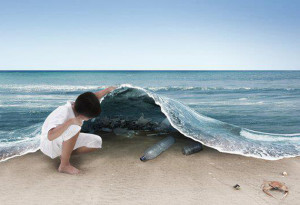Plastic, plastic, plastic, what are we going to do with you?!
 Well, I am sure we have all heard by now that there is a region in the Pacific Ocean where there is a plastic agglomeration twice the size of the state of Texas (aka where the currents collide). As sad as this is, some companies have found inspiration from it! For example, “ocean fresh”, “blue ocean coral” and “sea breeze” are all scents used by recent home care launches. I know, I know, these are just SCENTS, but it is a start!
Well, I am sure we have all heard by now that there is a region in the Pacific Ocean where there is a plastic agglomeration twice the size of the state of Texas (aka where the currents collide). As sad as this is, some companies have found inspiration from it! For example, “ocean fresh”, “blue ocean coral” and “sea breeze” are all scents used by recent home care launches. I know, I know, these are just SCENTS, but it is a start!
Eco-Savy is rooting for “Methods” new hand wash and dishwashing soap that is made from recovered ocean plastic. Specifically, they have launched a 2-in-1 dishwashing liquid and hand wash, with plastic packaging made partly from post-consumer recycled plastic found along the ocean shores. The material was developed in partnership with recycle HDPE supplier Envision Plastic.
Where Is This Ocean Plastic Collected?
Surprisingly, the “ocean plastic” is hand collected by Method employees and volunteers from beaches across Hawaii. However, the problem they face is the quantity of plastic…it just isn’t enough! After all, most of the plastic is IN the ocean, rather than on the shorelines. Thus, Method had to resort to combining this “ocean plastic” with post-consumer recycled waste to create a “grey-coloured” bottle. Eco-Savy is extremely impressed by Method’s efforts.
Are There Other Companies Using “Ocean Plastic” In Their Products?
Ecover, the Belium based manufacturer of environmentally friendly cleaning products, is also looking to the sea as a potential material source. Working with plastics manufacturer Logoplaste, its plastic will be collected directly from the sea using special equipment that can be fitted to fishing boats. This is a step in the right direction!
What is Methods Long Term Goal?
Method was clear that their initiative is not to clean up the world’s oceans, but to raise awareness about the issue and to demonstrate novel ways to reuse waste plastic, which is still something! Indeed, the focus in not providing a solution to sea based plastic waste, but rather highlighting the issue of plastic waste in the sea to consumers and the wider public.
Where Can I Buy Method’s “Ocean Plastic”?
Method soap products are sold at Nature’s Emporium in Newmarket Ontario – Canada (great, great store!) and Whole Foods Market. Also, you can purchase the soap and detergent online at methodhome.com.
Plastic waste is a major problem in our world. Many people don’t even think twice when they toss their Starbucks (or Tim Horton’s) cup in the garbage…after all, that lid could have been recycled. So just try and pay a little more attention to the products you bring into your home and how you are disposing them 🙂



